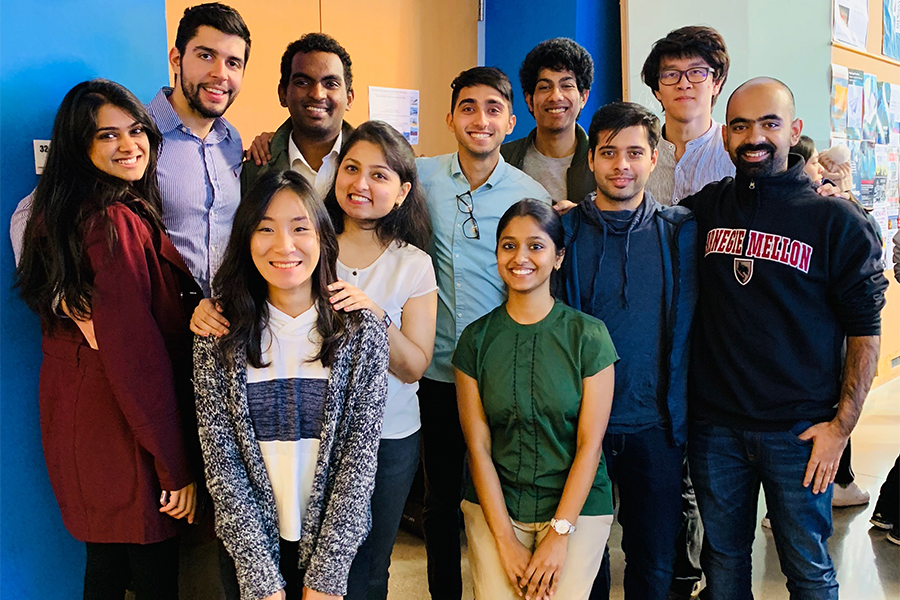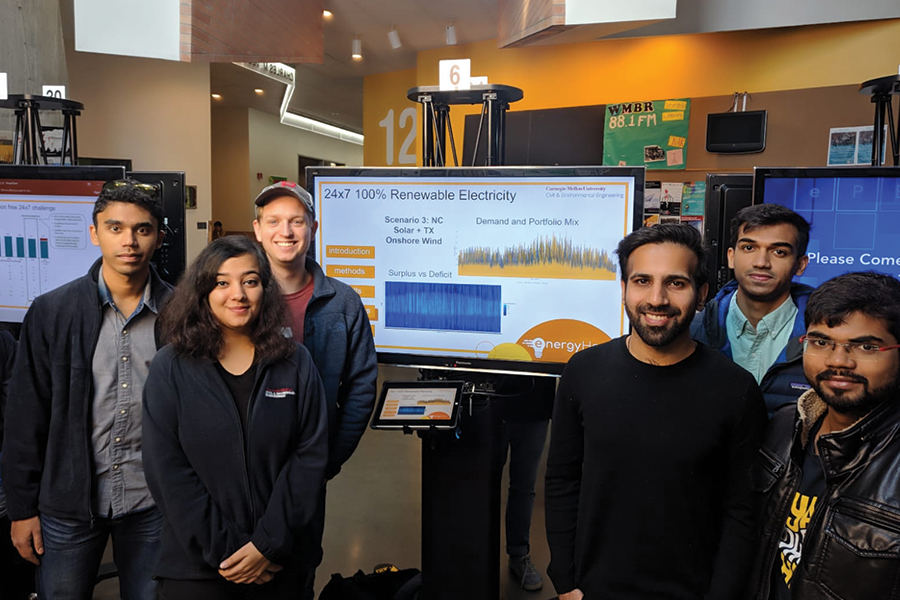
EST&P Students Place in MIT EnergyHack’s Semi-Finals
By Amanda King
Media InquiriesOn Nov. 4, 18 graduate students in the Energy Science, Technology and Policy (EST&P) master's program and Civil and Environmental Engineering (CEE) Department presented solutions for real-life energy problems at MIT EnergyHack, an annual hackathon that takes place at the Massachusetts Institute of Technology over an entire weekend. One of the EST&P teams placed in the semi-final round and took home $100 worth of prizes.
Multiple energy companies including Schneider Electric, WiTricity and Cimetrics Analytica presented their challenges and awarded cash prizes up to $2,000 for the best solution. On Friday night, participating students had the opportunity to choose a challenge and work on it for the next 36 hours.
Each team consisted of 4-7 university or high school students. The 12 EST&P students were divided into two teams. The first team, which included Vibhor Kumar, Akshay Thyagarajan, Rahul Kamath, Shefali Rai, Samanvitha Murty and Ed Liu, took on the challenge by Cimetrics, a company that works on building automation to enhance sustainability. The team was tasked with formulating policy interventions to reduce greenhouse gas emissions by 80 percent in Australia.
"I really enjoyed the collaborative nature of the challenge and the opportunity to apply the knowledge I gained from the classes at CMU to address a real contemporary issue,” said Kumar.
The students, who competed against two other teams, presented a compelling case that impressed the judges: pairing natural gas combined cycle plants with carbon sequestration. For this innovative solution, they were awarded scientific books on energy and climate change, worth $100.
The second EST&P team, which consisted of Aditya Belapurkar, Ansh Nasta, Athanasios Terzakis, Daksha Bopanna, Kai-Wei Yu and Poorna Mujumdar, chose WiTricity's challenge of creating a business model for vehicle-to-grid integration for electric vehicles. The company develops wireless chargers for electric vehicles and only recently became interested in vehicle-to-grid integration.
Although the EST&P teams did not advance to the final round of the competition to pitch their ideas to a panel of judges, the event was overall a good learning experience that also included networking with companies and other students who are equally passionate about energy, says Bopanna.
The team of CEE students included Rahim Ali, David DeSmet, Aradhana Gahlaut, Parth Nabar, Akash Pushkar and Kandasamy Sivasubramanian. They worked on the challenge presented by CustomerFirst Renewables, a renewable energy advisory company based in Maryland. The students proposed a solution that would enable MIT to power its campus using only renewable energy while also accounting for hourly load matching. They suggested using an energy mix of viable off-site renewable energy resources along with required grid energy to match MIT's hourly energy demand in a given year while also justifying energy sustainability, the social cost of carbon and financial viability.

The overall winning team, Solaris, took home the grand prize of $2,000 for their solution of modeling a building as a microgrid.
"The most exciting part was seeing the innovative solutions many teams had come up with,” said Yu.